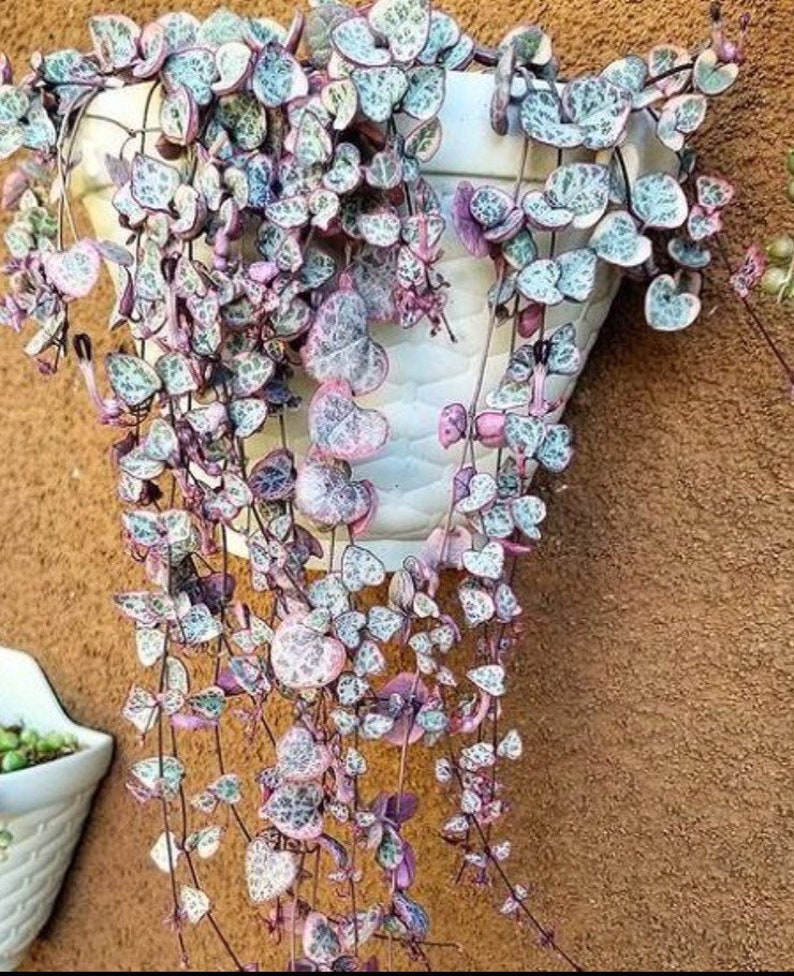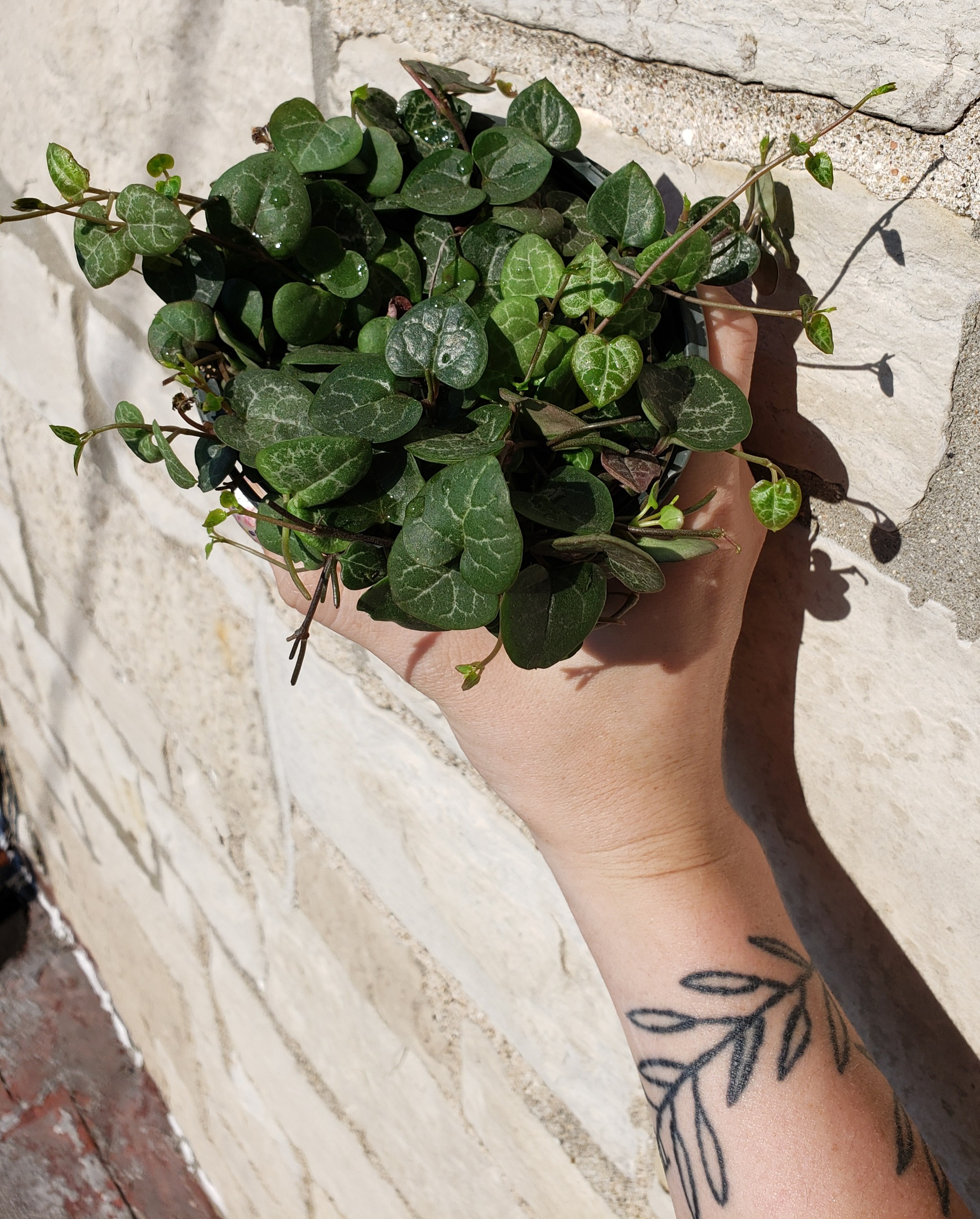
Agricultural Research Service, United States Department of Agriculture. Adopt a healthy watering routine: String of hearts shriveling is most times the result of too much or too little application of water to the plant. This plant has gained the Royal Horticultural Society's Award of Garden Merit (confirmed 2017). Carry out routine checks on your string of hearts. It typically requires shady conditions consisting of 3-4 hours of indirect sunlight. It can be grown outdoors only in subtropical and tropical areas having a minimum temperature of 15☌ (59☏). Excess water should be removed from plant saucer after watering. It requires excellent drainage, should be watered only when dry, and should never stand in water. Several cultivars have been selected, some with variegated leaves. The five petals are a deeper purple.Ĭeropegia woodii is tender and in temperate regions it is a very popular houseplant, often grown in hanging baskets so the long trailing branches may hang down with their leaves spaced out like a row of large beads.

The corolla grows to 3 cm in length and is a mixed colouring of off-white and pale magenta. The string of hearts plant can make a wonderful addition to any indoor garden. In general, the flower form is similar to those of other Ceropegia species. On the stems these tubers form at nodes and are likely the reason for the common name of rosary vine. The roots, and occasionally the stems, will often develop tubers. With age it develops a woody caudex at its base. When exposed to sufficient light they have a deep green colour under insufficient lighting the leaves are pale green. Its leaves are shaped like hearts, about 1–2 cm wide and long. It is an evergreen succulent trailing vine that grows to 10 centimetres (3.9 in) in height and spreads to reach up to 2–4 metres (6 ft 7 in – 13 ft 1 in) in length. Its trailing habit, neat appearance, and tolerance of neglect, made it an ideal plant for hanging baskets. Brown, produced a detailed description, naming the plant after its discoverer.

The prolific botanical artist Matilda Smith prepared the plate, while the Kew taxonomist, N. The plant that had been sent to Kew subsequently flowered, providing the material for Plate 7704 of Curtis's Botanical Magazine published in 1900. Thirteen years later, in 1894, he sent a living plant to the Royal Botanic Gardens, Kew, UK. In 1881, the species was discovered hanging from rocks on Groenberg Mountain in Western Cape, SA, at an altitude of 1800 feet, by John Medley Wood, curator of the Durban Botanic Gardens. Common names include chain of hearts, collar of hearts, string of hearts, rosary vine, hearts-on-a-string, and sweetheart vine. It is sometimes treated as a subspecies of the related Ceropegia linearis, as C. String of hearts is a dainty, low-maintenance vining plant that even inexperienced growers can maintain quite well. Ceropegia woodii is a flowering plant in the dogbane family Apocynaceae, native to South Africa, Eswatini and Zimbabwe.


 0 kommentar(er)
0 kommentar(er)
